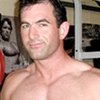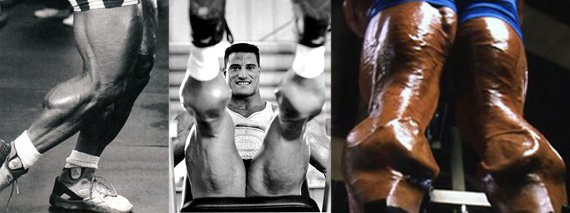In 47 years, only 13 men have been crowned Mr. Olympia. By winning this title, these men were given the honor of having built the perfect physique. However, whenever somebody raises the contentious subject of whose physique merits recognition as the best of all time, consensus is impossible to reach.
All champions possess weaknesses. Dorian Yates made his name with unparalleled muscle size and density. Others, like Frank Zane, carry proportions, symmetry, and definition to such a high degree they are considered art in human form. Despite these ideal physiques, there has yet to be a champion who everyone considers "perfect."
So how do we decide the best bodybuilder of all time? We build our own. To form the world's greatest competitor, we've put together an assemblage of some of the best body parts ever to walk the stage. From front to back, top to bottom, this athlete is perfectly balanced and complete with the muscle groups from some of history's greatest bodybuilding heroes. Read on to discover whose muscles we've used to stitch together the perfect bodybuilding contender.
As the winner of the past two Mr. Olympias, Phil Heath has shown that he is much more than the owner of a massive set of arms. Despite his incredible overall presentation, his biceps really are in a class of their own. Perfectly peaked, full from origin to the insertion, shredded beyond imagination, Heath's cartoon-like cannons combine all the desired attributes needed for freakish biceps development. They might be the best we'll ever see.
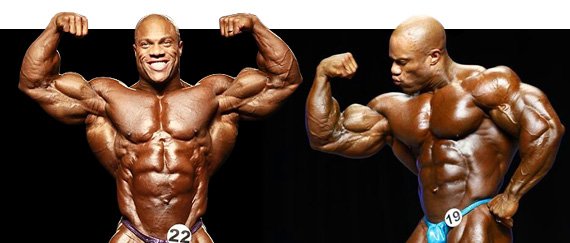
To many bodybuilding fans, Kevin Levrone is an uncrowned Mr. Olympia winner. Although he was a complete bodybuilder, he was known especially for his titanic, fully-etched triceps. In the 90s, the term "horseshoe" became a catchphrase for complete triceps shape and size in which all three heads of this muscle group are clearly visible and inhumanly large. Levrone was a major catalyst for this term's popularity. His triceps are regarded as the best ever.
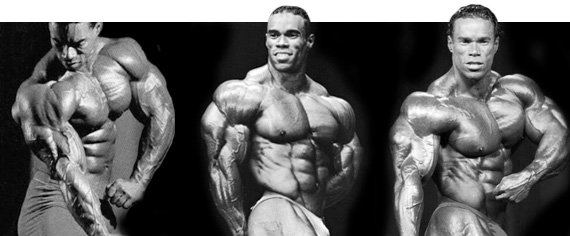
When determining superior chest development, it is hard to go past seven-time Mr. Olympia Arnold Schwarzenegger. The Austrian Oak's 58-inch chest helped establish him as the standard for bodybuilder excellence. He had the quintessential classic physique coupled with mass way ahead of his time. Arnold was noted for his awe-inspiring upper body mass and shape: his chest was simply flawless. Even by today's standards, few have been able to match his complete, full, and powerful pecs for size and shape.
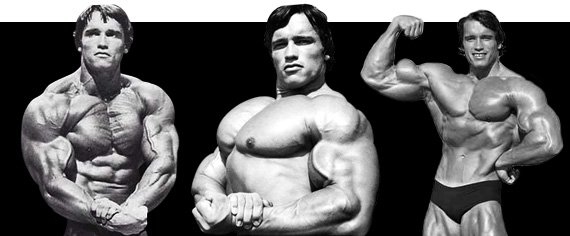
With his titanic size and muscular density, the massive Brit Dorian Yates ushered in the era of mass, and he owns six Sandow trophies. He's famous for his giant size and freaky conditioning, but he also boasts perhaps the thickest, most complete back in all of bodybuilding history. His back has become the new gold standard.
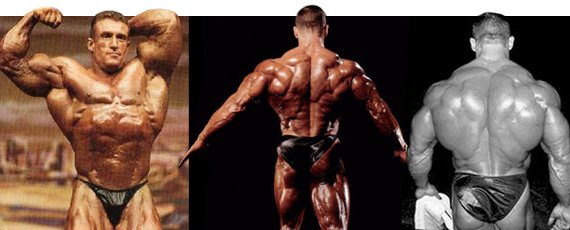
Though technically part of the back complex of muscles, traps are unique for their visual impact. When Coleman squeezed his patented "most muscular" pose, his otherworldly traps truly set him apart. Though Big Ronnie ticked all the big back boxes—hanging lats, deeply-etched Christmas tree development, phenomenal detail from top to bottom—his remarkable traps stole the show and deserve to be credited as the biggest and best of all time.
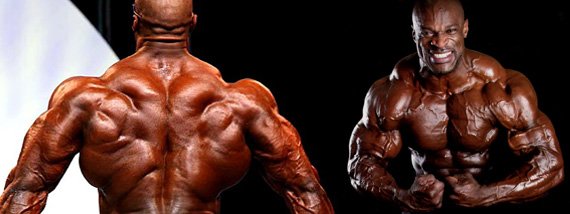
Wheeler is arguably the greatest bodybuilder without an Olympia title. He's best known for his impressive silhouette. Even in a relaxed pose, his small waist, flaring V-taper, and round, thick deltoids were a sight to behold. His proportionally-perfect deltoids were cannon balls, yet clearly demonstrated delineation between the front, medial, and rear proportions. Flex's shoulders are probably the most perfect ever seen on a pro bodybuilding stage; they helped establish him as a firm fan favorite and a legend among champions.
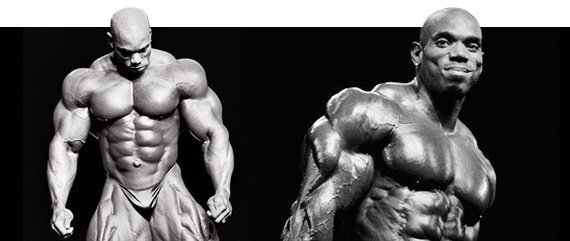
In the 1970s, mass monster Mentzer crafted a physique of steel-cord muscle thickness. Although his "heavy duty" training regimen helped him gain size in all areas, he was the proud owner of perhaps the best forearms of all time. Mentzer possessed vascular and immensely shredded lower arms which displayed the kind of size that can only be achieved through the right combination genetics and mind-numbing training intensity.
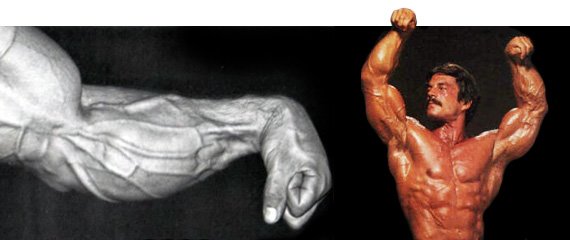
Frenchman Thierry Pastel won a slew of pro shows and many consider him to be one of the most underrated bodybuilders ever. Aside from some impressive arm development, a Pastel physique highlight was undoubtedly his eight-pack abdominals, aptly accentuated via a tiny wasp-waist. When shredded, Pastel displayed world-class serratus, oblique, and rectus abdominis size and shape.
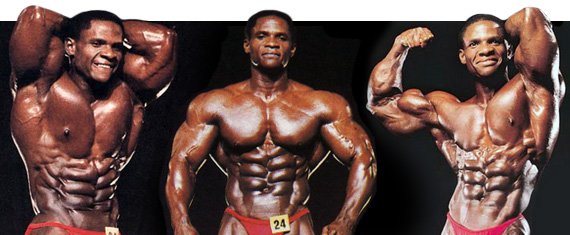
As a top competitor of the 70s and 80s, Tom was the owner of the best complete set of legs ever to grace the pro bodybuilding arena. His 30-inch-diameter legs lorded over competition with deep quad/ham separation and razor definition that clearly highlighted his thickly-developed vastus lateralis, medialis, and intermedius muscles. Platz's legs were built on a steady diet of high-rep squats (He once completed 23 super-strict reps with 500 pounds). When relaxed, his hamstrings jutted out as much as a flexed biceps. His quadriceps cuts were so deep they appeared to have been slashed into shape with a freshly sharpened samurai sword. His phenomenal development may actually have prevented his winning the Olympia because he was never able to create an upper body that could match his mythical legs.
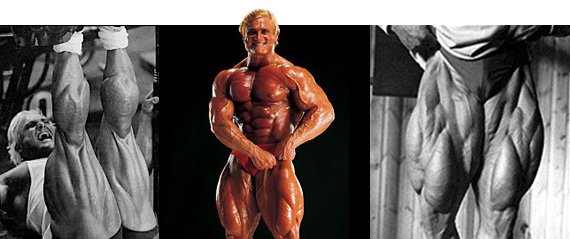
Bursting onto the pro bodybuilding scene with a heavyweight win at the 1991 NPC USA Championships, "The Boston Mass" Mike Matarazzo was credited for having some of the best lower legs in the business. Resembling full-sized footballs and stretching the tape to more than 21 inches, Matarazzo's calves were in a class of their own. Blessed with good genetics, Mike inherited his father's large legs. But as he started training his calves for bodybuilding, he witnessed an explosion of growth. Mike's calves are the obvious choice for our ultimate bodybuilder to stand on.
